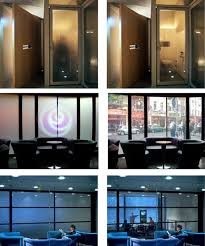August 26, 2013 – Boulder, CO – Used in the building and transportation sectors, smart glass provides dynamic glare, light, and heat control based on ambient conditions or manual controls. As buildings (and many vehicles) become glassier, building codes are becoming stricter and energy performance is growing in importance to building owners. Smart glass can help improve energy performance while adding to occupants’ comfort and satisfaction. According to a new report from Navigant Research, the annual value of the smart glass market will grow from $88 million in 2013 to $899 million by 2022.

“The past year has seen several positive developments for the smart glass sector, including the establishment of new industrial-scale production capacity, increased levels of investment, and partnership announcements between smart glass technology companies and upstream and downstream suppliers and participants,” says Eric Bloom, senior research analyst with Navigant Research. “Still, this sector is in formation, and growth is likely to accelerate in the years after 2022.”
The primary barrier to adoption of smart glass is price. Prices to the end user are at least double what would be paid for static, high-performance glazing, according to the report. While there may be ways to drive down the overall budget impact of selecting smart glass – for example, through selective use of the glazing on certain building elevations, or through savings on heating, ventilation, and air conditioning based on the reduced cooling loads afforded by smart glass – cost will remain a limiting factor through the forecast period.
The report, “Smart Glass”, provides an analysis of various smart glass technologies and their applications in the building and transportation markets. It provides insights on the go-to-market strategies for vendors, and considers how their relationships with glazing sector companies and suppliers are shaping the market. Market forecasts for glazing unit product volume and value, segmented by technology and end-market sector, extend through 2022. The report also includes an examination of the market drivers and barriers, as well as costs and benefits, related to smart glass. An Executive Summary of the report is available for free download on the Navigant Research website.
About Navigant Research
Navigant Research, the dedicated research arm of Navigant, provides market research and benchmarking services for rapidly changing and often highly regulated industries. In the energy sector, Navigant Research focuses on in-depth analysis and reporting about global clean technology markets. The team’s research methodology combines supply-side industry analysis, end-user primary research and demand assessment, and deep examination of technology trends to provide a comprehensive view of the Smart Energy, Smart Utilities, Smart Transportation, Smart Industry, and Smart Buildings sectors. Additional information about Navigant Research can be found at www.navigantresearch.com .
About Navigant
Navigant (NYSE: NCI) is a specialized, global expert services firm dedicated to assisting clients in creating and protecting value in the face of critical business risks and opportunities. Through senior level engagement with clients, Navigant professionals combine technical expertise in Disputes and Investigations, Economics, Financial Advisory and Management Consulting, with business pragmatism in the highly regulated Construction, Energy, Financial Services and Healthcare industries to support clients in addressing their most critical business needs. More information about Navigant can be found at www.navigant.com .
Advertisement





